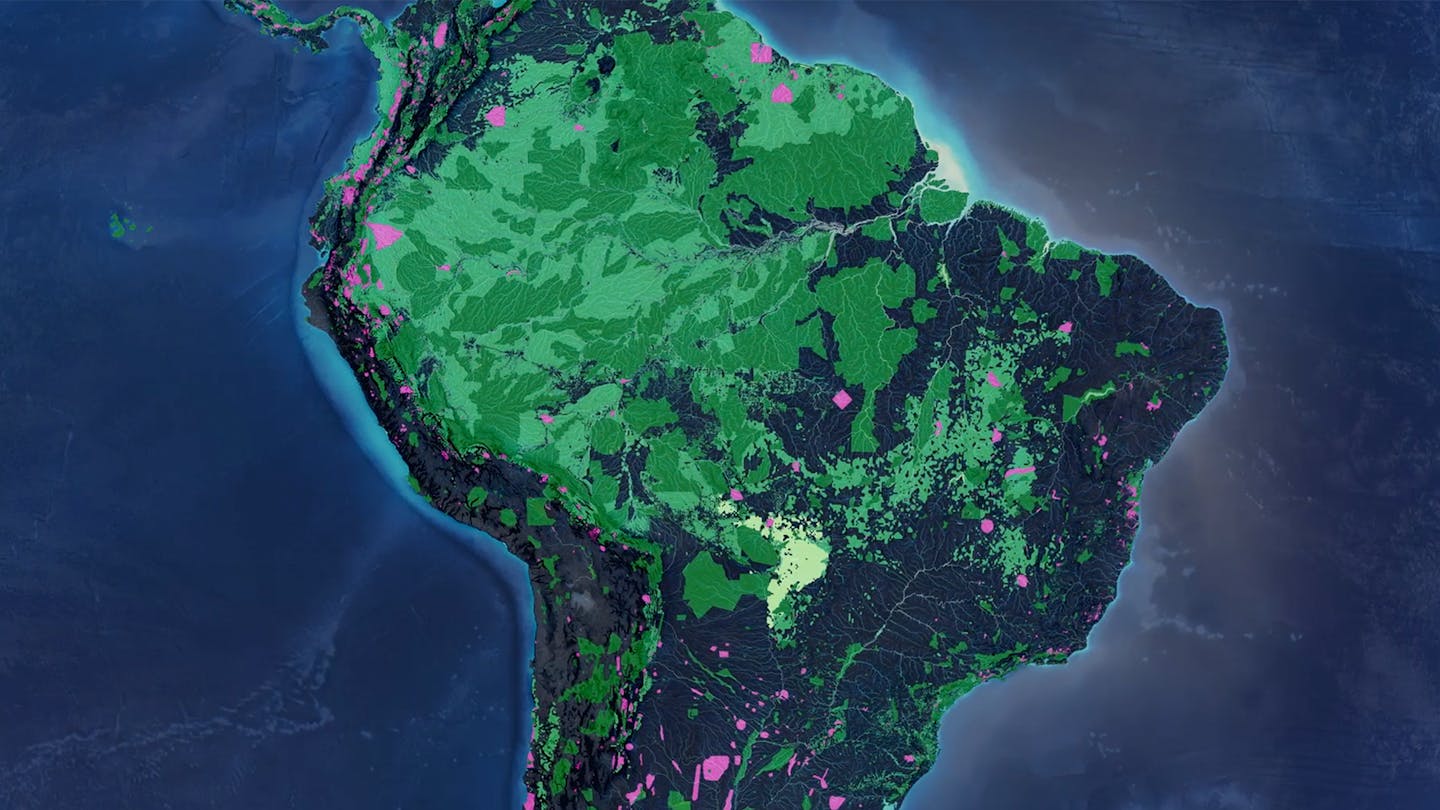A biodiversity ‘Safety Net’ for Amazonia
- Nature Conservation
- Land Conservation
- Protected Lands
- Biodiversity
- Education & Awareness
- Amazonia
- Southern America Realm
The Biden Administration has the opportunity to fulfill its climate action commitments and Amazon Rainforest protection pledge by taking 16 priority actions laid out in the Amazon Climate Platform. These 16 actions have been distilled by Amazon leaders and experts — including Indigenous peoples and organizations, a broad range of NGOs, scientists, artists, and influencers — as effective ways to meet the needs of the urgent situation in the Amazon Rainforest. One Earth's Deputy Director Karl Burkart presents findings from the Amazon region from the Global Safety Net.
The Global Safety Net (GSN), published last year in Science Advances, was the first peer-reviewed analysis that documents the full spatial extent of all remaining natural lands that play an important role in biodiversity and carbon storage. The paper shows that if we want to maximize our chances of reversing the extinction crisis and rebalancing our global climate system, 50% of the Earth’s land needs to be protected and recognized as being of vital importance for the preservation of life on our planet. These areas – whether formal protected areas or Indigenous governed lands -- need to be funded accordingly for their conservation value.
Between 35-40% of the land in the GSN represents Indigenous territories, according to a recent spatial analysis (Garnett et al). Therefore, when we talk about achieving success in the UN post-2020 Global Biodiversity Framework, we MUST go much much further than a discussion about “inclusion.” If we are to achieve the goals of the Convention on Biological Diversity, we need an Indigenous-led conservation agenda which centers Indigenous land tenure rights as a means to achieving conservation outcomes.
The Amazon is one of the most important subrealms on Earth. You may have seen a slew of extreme headlines a while ago about the Amazon collapsing – most got the science wrong. The Amazon forests are NOT collapsing and they are not a contributor to climate change, in fact they absorb 10-15% of all human-caused carbon emissions every single year. The correct statement is that poor land use policies, particularly in Brazil, are now contributing significantly more carbon to the atmosphere than the forests are able to absorb. We need to preserve and protect every square inch of the Amazon.
According to the Global Safety Net, 85% of the Amazon region is identified as vitally important for the conservation of biodiversity. Between 30-50% of these land areas are Indigenous.
30x30 target has become popular and is being actively promoted by several parties as a good area-based target for the post-2020 GBF. It would be a step in the right direction compared to what we have now, but it’s not enough. One of the few spatial analyses created to support the 30x30 goal was released by McKinsey a few months ago. You can see the problem.. Most unprotected high-biodiversity lands in the Amazon are excluded, including many Indigenous territories.
It would be a travesty if we were unable to expand conservation areas in the Amazon. Although it’s impossible to put a dollar value on nature, one approach that harmonizes the contribution of ecosystems to the global economy clearly shows the Amazon as one of the most important regions in the world (Li & Fang 2014). In this model, the Amazon provides an estimated $9.3 trillion in value each year (using an average of $20,00/ha inflation adjusted for 2020). That’s 6x more than the combined national debt of Amazonian countries – Brazil ($1200B), Peru ($57B), Ecuador ($56B), Columbia ($154B), Bolivia ($24B). We need to start thinking about ecological debt – the fact that northern countries most responsible for climate change are reliant upon southern countries to maintain their natural ecosystems, but instead of paying them to do so, the are charging them interest! We need to reverse this dynamic.
Explore the Global Safety Net


